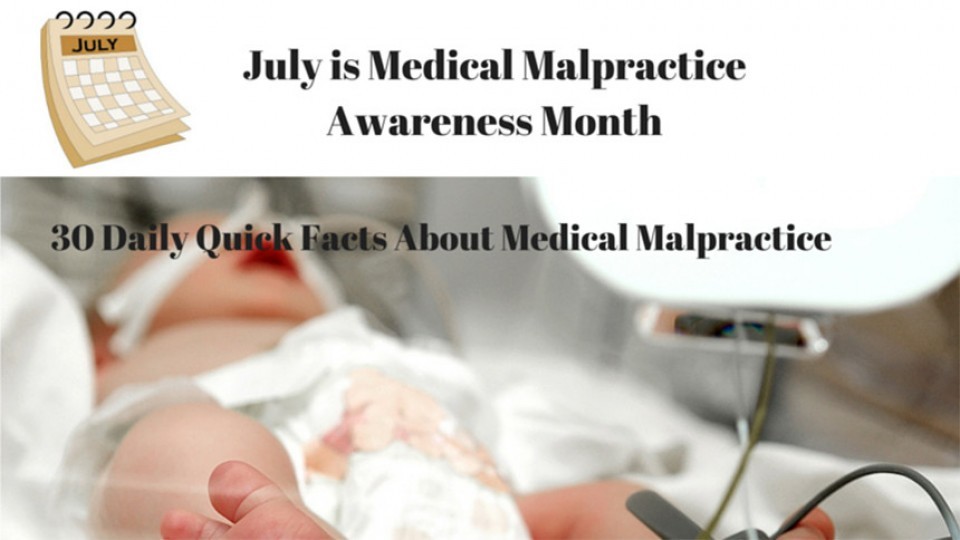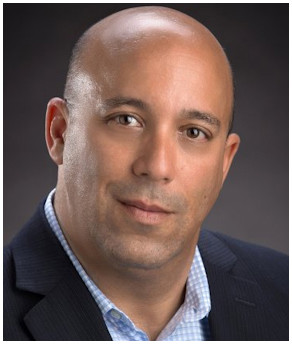July is Medical Malpractice Awareness Month

Medical malpractice is a huge problem in the United States. Every July, The National Medical Malpractice Advocacy Association (NMMAA) organizes and promotes National Medical Malpractice Awareness Month. The goal of this month is to raise awareness of medical malpractice and to help end negligent acts of harm caused by medical negligence. At the Eisen Law Firm, we focus on one thing only: medical negligence. We help those harmed by medical negligence seek the justice they deserve. Throughout July, we too will help raise awareness of certain issues of medical malpractice. You can contact us anytime at 216-687-0900 to discuss your specific medical negligence issue.
30 Daily Quick Facts About Medical Negligence:
- Medical negligence is the 3rd leading cause of death in the United States.
- There are 251,000 deaths per year due to medical errors.
- Deaths caused by medical error are unmeasured and discussions about prevention occur in limited and confidential forums.
- Lessons learned from confidential forums on actual medical errors are not shared beyond one institution.
- There is no accurate national picture of medical errors because there is no standard reporting of these errors.
- Death certificates in the US have no facility for acknowledging medical error.
- 195,000 patients die in hospitals each year due to medical errors.
- $38.8 billion was paid out for misdiagnosis of a patient between 1986 and 2010.
- Medical malpractice cases have been decreasing over the years, especially those cases that are less than $50,000. Why? Because medical malpractice attorneys can not afford to bring these cases to trial as they only get paid if they win.
- 9% of doctors have been responsible for 57.8% of all medical malpractice payments from 1990-2005.
- Most hospitals do not track the complication rates of their surgeons and use that data to improve patient care. Neither does the government.
- A physician can lose their license to practice medicine in one state and just move to another state to start over.
- An average of 103,000 doctors, nurses and other health care providers were abusing or dependent on illicit drugs – and they do not need to disclose this to their patients.
- Most medical malpractice cases are settled or dismissed; only about 2% of claims are tried, and at trial, providers win about 75% of the time.
- Medical malpractice trials are not clogging the courts. Fewer than 10% of all jury trials are medical malpractice trials.
- The plaintiff win rate for medical malpractice trials is about 23%. The odds are not in your favor.
- The best way to reduce medical malpractice litigation is to reduce the amount of malpractice. A “drop in malpractice claims corresponded with an increase in hospital’s quality scores.”
- Doctors order extensive testing because it increases their revenue stream, not because they are practicing defensive medicine.
- Women are at least 17% more likely to have a c-section at a for-profit hospital than at a not-for-profit hospital. A surgical birth can bring in twice the revenue of a vaginal delivery.
- Some sort of medical mistake or adverse event occurred in every second operation and in 5% of observed drug administrations.
- Only 33.26 % of doctors who made 10 or more medical malpractice payments were disciplined by their state boards.
- 7 out of every 1,000 births result in children with cerebral palsy. All preventable.
- 5% of hospital-affiliated doctors in Ohio take payments from drug and medical device companies.
- Only 1 in 8 people injured by medical negligence file a medical malpractice claim according to the Institute of Medicine.
- The annual cost to society for medical errors in hospitals is between $17-$29 Billion.
- Medical malpractice is a large area of law that encompasses a wide range of legal issues. Healthcare providers are required to adhere to an established standard of care when evaluating, treating and monitoring patients. All providers are supposed to act in a way that is comparable to how other providers would act in the same situation. If this standard of care is breached, the victim may be able to recover damages for injuries caused by such negligence.
- In Ohio, in order to file a medical malpractice lawsuit you have to obtain an Affidavit of Merit from a qualified physician attesting that you or your loved one was in fact the victim of medical negligence. Then, to prove that medical malpractice occurred, we must show:
- A doctor-patient relationship existed
- The doctor or other medical personnel acted unreasonably under the circumstances
- As a result of this act (or failure to act) you were injured
- In Ohio, if you want to sue a neighbor for trespassing, you have 4 years; a house painter for breach of contract, 8 years. But a medical professional for medical negligence, you only have 1 year (there are exceptions so contact a lawyer).
- In Ohio, when medical negligence results in injury and death, there are two claims that may be brought. 1) medical negligence (for the patient) 2) wrongful death (for the survivors) The time limit to seek these claims are different.
- The person harmed by a medical professional usually does not have to pay any costs upfront. The legal firm will cover all the costs and only collect a fee if they win.
References:
http://www.bmj.com/content/353/bmj.i2139 Medical error – the third leading cause of death in the US
https://centerjd.org/content/briefing-book-medical-malpractice-numbers
http://www.medicalnewstoday.com/articles/248175.p What is medical Malpractice
http://www.forbes.com/sites/learnvest/2013/05/16/10 10 Things You Want to Know about Medical Malpractice




